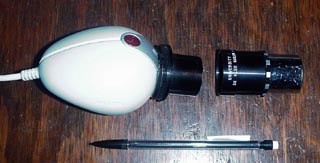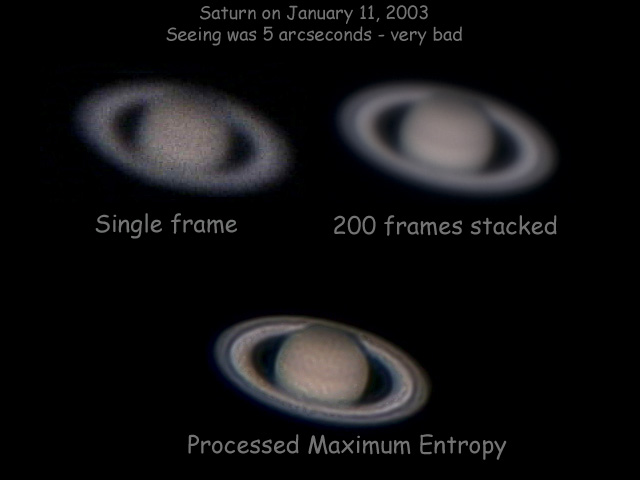The night was clear, but the seeing was amongst the worst I have ever seen in Arizona, stars were moving bodily about 10 arcseconds or more, and waves of blurring moved over the moon and Saturn like being underwater. This was a good test for the rapid fire action of the VestaCam a color web cam under $100 and Registax, a new freeware program to take thousands of frames from an AVI file and combine them according to preset quality levels. For these images, all were bad quality, but there were 200 out of the 600 taken at 15 frames per second that were a bit better. Registax identified them automatically, and those I used for the average. When the seeing returns to normal, about 1 arcsec or better, I will repeat this sequence, and take many more frames. I will not re use the klee barlow which has bad aberrations for imaging, but try another type. Processing notes: RGB stack made in Registax, L channel split off in Photoshop, deconvolved in maxim, L channel reinserted in Photoshop. Instrument: 12.5" f/5 Home made Newtonian Platform: Astrophysics 1200 QMD CCD Camera: Phillips Vesta Cam Exposure: RGB = 1/15 sec ea Filters: None Location: Payson, Arizona Elevation: 5150 ft. Sky: Seeing FMHW = 10 arcsec, Transparency 8/10 Outside Temperature: -5 C Processing: Registax, Maxim DL, Photoshop
|
||||
|
FastCounter by bCentral |

